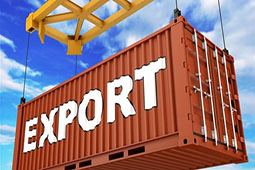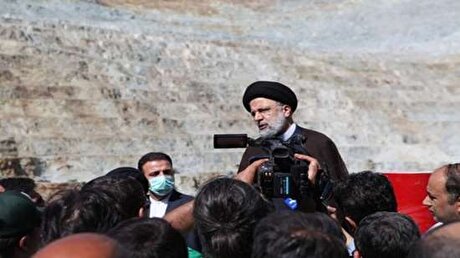Ports of Hormozgan Province Register 24% Rise in Non-Oil Exports


Director of Bandar Lengeh Ports and Maritime Directorate Ghasem Askarinasab put the nonoil exports growth in ports of Hormozgan province in the first eight months of the current Iranian year (started on March 21) at 24 percent.
Moreover, safe transportation of maritime passengers and loading-unloading volume of containers in the provincial ports registered considerable 20 and 28 percent hike respectively, he maintained.
Askarinasab expounded a comprehensive report on the eight-month performance of west ports of Hormozgan province in the current year (started March 21, 2018) and stated, “in this period, total 5,834,650 tons of oil and nonoil goods were loaded and unloaded in west ports of this province, 1,278,790 and 4,555,860 tons of which have been allocated to the nonoil and oil products respectively.”
In this regard, total transit volume of nonoil products (mainly vehicle) in west ports of Hormozgan province hit 186,219 tons, showing a considerable 73 percent growth as compared to the same period of last year.
Elsewhere in his remarks, he pointed out that relocation of 79,280 transit vehicles in the eight months of the current year (March 21 – Nov. 21) in ports of this province registered a significant 39 percent growth as compared to the last year’s corresponding period.
He also put the exports volume of nonoil goods in this port at 655,827 tons, recording a significant 24 percent hike.
Turning to the measures taken in the provincial ports in order to expand port activities and containerize goods loading and unloading operation in west ports of this province, he maintained, “The province witnessed considerable 28 percent growth in loading and unloading operations after the implementation of expansion project in Bandar Lengeh in the recent years.”
Earlier this month, Deputy Head of the Trade Promotion Organization of Iran Mohammad Reza Modoudi announced, “Non-oil exports have been reached more than $27.3 billion and gone beyond $30 billion by November 6, which shows about 14% growth comparing to the same period last year.”
He also said that Iran's exports in technical and engineering services hit $500 million.
The Central Bank of Iran (CBI) announced last Monday that Tehran's total foreign debts reduced by 9 percent in the first six months of the current Iranian year (March 21 – September 21), showing a significant slump as compared to the same period last year.
The volume of Iran’s foreign debt by the end of Iranian month of Shahrivar (Sept. 21) hit $10,317 million, $6,853 and $3,464 million of which is related to the mid-, long-and short-term periods, respectively.
CBI also put the total volume of Iran’s foreign debt by the end of Iranian month of Mordad (August 21) at $10,405 million, the rate of which faced a significant decline in the next month.
Statistics show that Iran’s total foreign debts by the end of the first Iranian month of Farvardin (April 21) hit $11,305 million, showing a significant decline in the first six months of the current year.
Accordingly, the proportion of Iran’s foreign debts to gross domestic product (GDP) stands at about 2.5 percent which is considered as a partial figure.
Comparing the index of ratio of Iran’s foreign debt to GDP with other countries indicates that Islamic Republic of Iran is among the countries that has the minimum foreign debt rate in the world.
Foreign debt includes debts of a country to foreign lenders which can contain the loans received from foreign private banks, other governments and international financial institutions such as World Bank (WB) and International Monetary Fund (IMF).





